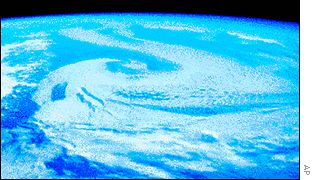
The machine simulates climate and plate tectonics
cartome.org
26 April 2002
Friday, 26 April, 2002,
11:19 GMT 12:19 UK
BBC News Sci/Tech
Japanese supercomputer simulates Earth

The machine simulates climate and plate tectonics
A new Japanese supercomputer costing hundreds of millions of dollars was switched on this month and immediately outclassed its nearest rival.
Before its launch, all of the top six supercomputers in the world were in the US.
The new machine, called the Earth Simulator, is five times as fast as the best of these and is being used by the Japan Marine Science and Technology Centre to make predictions about the future of the Earth's climate and its crust.
A German supercomputer expert says it is likely to remain the world's fastest supercomputer for at least two years.
Rivals outclassed
The previous record holder, ASCI White at the Lawrence Livermore Laboratory in the US, was built by IBM and is used to simulate nuclear weapons explosions.
The performance of giant computers like these is judged by the number of floating point operations or Flops - calculations involving non whole numbers - they can carry out every second.
The Earth Simulator is capable of 35 teraflops, or 35 million million calculations per second.
It trounces ASCI White's 7 teraflops but uses fewer processors.
Challenge for US
Hans Werner Meuer, founder of the top 500 list of world supercomputers, says he expects the Earth Simulator to outperform all of its nearest 19 rivals put together.
"The ES is a real challenge for the US ASCI programme. The US labs are now falling significantly behind," he told the high performance computing news service Primeur.
The Earth Simulator was built by NEC and achieves its extraordinary performance by using components optimised for the particular problem it sets out to solve.
US manufacturers have tended to concentrate on making machines which use high numbers of relatively cheap components.
ASCI White has 8,192 processors, while the Earth Simulator has only 5,104.
Design work on the Japanese machine began in 1997 and it occupies a specially constructed new building which takes up the size of four tennis courts.